Locke, California: The only town in the US built for Chinese people
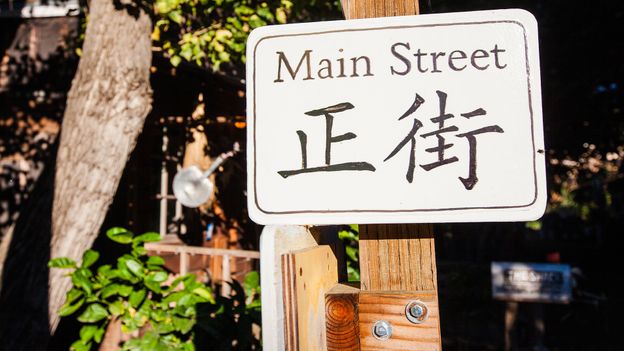
 Alamy
AlamyChinese labourers transformed central California from a swamp to an agricultural powerhouse – and built a bustling Chinese-run town once called the “Monte Carlo of California” in the process.
Fifty miles south of Sacramento, a network of canals, marshes and bogs fed by rain from the Sierra Nevada mountains forms the tranquil California Delta. Over the years, waves of immigrants have settled in this fertile area along the Sacramento River, but amid the vineyards and family-owned farms dotting the area, the small town of Locke, California, holds a unique place in history as the only settlement in the US developed by Chinese people for Chinese people.
Locke’s narrow Main Street looks more like an alley. Weathered, centuries-old wooden buildings and houses with overhanging balconies flank each side of the road, transporting visitors to a time when this 60-person community was once a bustling Chinese hub replete with schools, a movie theatre, hotels and restaurants.
Today, Locke remains the best-preserved example of the rural Chinese settlements that once dotted Northern California – and the only one where some of the town’s original descendants still live and run businesses. With its former Chinese school, boarding houses, gambling halls and men’s associations now preserved as museums, visiting the US’ last rural Chinese town offers a fascinating glimpse into the lives of Chinese immigrants and their cultural influence on their new homeland.
 Alamy
AlamyWhen news of the California Gold Rush reached China in 1848, thousands of Chinese prospectors flocked to the Sierra foothills hoping get rich. The Chinese referred to California as Gam Saan or “Gold Mountain” and enjoyed initial success before other resentful miners attempted to drive them out. In 1850, California imposed a hefty Foreign Miner’s Tax aimed at Chinese prospectors, and they were soon violently targeted by other miners. Eventually, many Chinese workers turned to other opportunities, such as farming and building the Transcontinental railroad.
The California Swamp and Overflow Act of 1861 opened the Delta’s once-inhospitable swampland to the possibility of agriculture by allowing landowners and private companies to drain it. This opportunity attracted thousands of immigrants from China’s Guangdong (formerly Canton) region who were already skilled at draining swamps and building levees back home in the Pearl River Delta. These reclamation projects lead to the establishment of small settlements for Chinese labourers along the California Delta. Between 1860 and 1880, Chinese workers drained and reclaimed a staggering 88,000 acres of Delta soil, leaving an indelible mark on the landscape and helping to transform the region into the agricultural powerhouse it is today.
“The Chinese took immense pride in their work,” said Carol Lee, who grew up in the Delta, attended Chinese school in Locke in the 1960s and plays a leading role in the Locke Foundation’s Oral History Project, which educates the public about the town’s legacy. “We didn’t own the land, but we had the know how. We came from Pearl River Delta and knew how to develop the levees and farm the land.”
But similar to the Gold Rush hostilities, many Chinese farm workers soon faced backlash from whites who accused them of taking away their jobs. In response to this rising anger and racism, the government enacted a series of discriminatory laws, severely curtailing Chinese rights.
 Alamy
AlamyBeginning in 1872, California passed a series of laws prohibiting Chinese from owning land or securing business licenses. This was followed by the United States’ Chinese Exclusion Act in 1882, which effectively halted further Chinese immigration and naturalisation until its repeal in 1943. In 1913, California passed the Alien Land Law that specifically prohibited “aliens ineligible for citizenship” from owning agricultural land or possessing land leases longer than three years.
Despite these restrictions, Chinese labourers developed a thriving Chinatown in Walnut Grove, located a mile south of Locke. By 1880 the 814-person town was home to more than 100 Sze Yap Chinese and Zhongshan Chinese people from Guangdong province, as well as a few Japanese immigrants. However, a fire destroyed the area on 7 October 1915, displacing hundreds of families.
A group of Sze Yap Chinese and the Japanese rebuilt their homes in Walnut Grove by entering agreements with landlords to lease their land and construct buildings on their property. However, Lee Bing was not one of them.
Bing, also known as “Charlie”, was a prominent businessman in Walnut Grove and one of the few Chinese immigrants who spoke English. After making a fortune in his first seven years in the US, he built a gambling house in Walnut Grove in 1908, followed by second one, a hardware store, a dry goods store, a barber shop, a pool hall and a Chinese herbal medicine store. But when the fire hit, it destroyed all seven of Bing’s businesses.
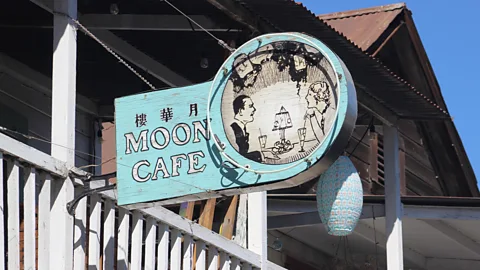 Alamy
AlamyThe day after the fire, a committee of Zhongshan merchants, led by Bing, approached local businessman George Locke Jr to negotiate an agreement on his land. Locke, who had already allowed three other Chinese merchants to lease land and build homes on his property in 1912, agreed to lease nine more acres of his land to the Zhongshan merchants, charging them “ground rent” of $5 monthly for residential lots and $10 for commercial lots. It was a gentlemen’s agreement that lasted for years, and as a result, the settlement previously called Lockeport became known as Locke.
Locke’s new Zhongshan residents soon built a dry goods store and saloon, a hotel and restaurant and a gambling hall on their small Chinese enclave, followed by 45 one- and two-storey wood-framed buildings between 1915 and 1917. Since the residents couldn’t own the land, they viewed Locke as a temporary residence and opted for less-expensive materials. Many buildings were left unpainted and covered with corrugated metal roofs.
“To me, it looks like a Western [frontier] town,” said Clarence Chu, the Locke Foundation’s vice chair. And today, the town looks nearly the same as it did 100 years ago.
Beginning in 1915, hundreds of Chinese workers settled in Locke, working in nearby canneries and local Delta farms. However, their contributions weren’t limited to labour. Residents established a Chinese school, where most children learned calligraphy and took Chinese language lessons. According to Lee, “This school was not just a place of education, but also a hub of cultural preservation, ensuring that the next generation learned about its Chinese heritage.”
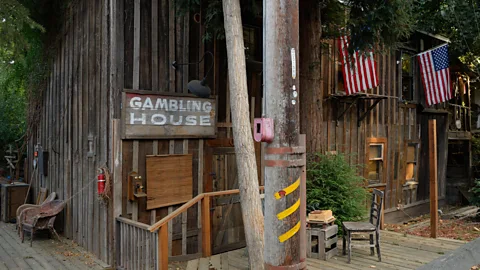 Alamy
AlamyDuring its heyday from the 1920s to 1940s, Locke was a thriving, culturally unique town with a population of roughly 600 people, most of whom were Chinese. The town included a Chinese-owned movie theatre, six restaurants, nine grocery stores, a hotel, boarding houses and a flour mill. The Sacramento Bee newspaper described it as the “Monte Carlo of California” because its illegal gambling halls operated freely until authorities shut them down in 1951.
Once the Chinese Exclusion Act was repealed in 1943, descendants of Locke’s original Chinese families started moving away, seeking better opportunities in nearby cities. Today, only a small fraction of Locke’s 60 residents are Chinese. Yet, according to Min Zhou, director of the new documentary Voices: Chinese Women of the Delta about how Chinese women helped shape the California Delta, Locke’s real legacy is how “the town successfully provided shelter in the shadow of discrimination, allowing Chinese immigrants to find their way to survive and make a contribution to the Delta”.
As Locke’s population diminished in the 1960s, the exodus didn’t destroy the town. “Locke was always a sustainable place. Everyone knew and respected one another. The friendly interaction among townsfolk provided a social cohesion that remains today,” Lee said. “Some who left have come back to help restore the town.”
In 1990, Locke became a National Historic Landmark, with the US Department of Interior noting that “the Locke Historic District is the largest, most complete example of a rural, agricultural Chinese American community in the United States”.
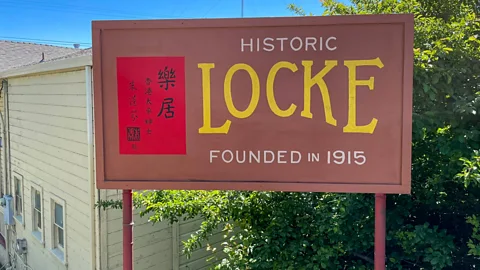 Pam & Gary Baker
Pam & Gary BakerYet, around the same time, Locke was facing critical infrastructure problems. Its septic system was failing, and its Chinese and newer non-Chinese residents still didn’t own the land on which their houses and businesses were built. However, in 2004 the Sacramento Housing and Revitalization Authority (SHRA) stepped in by purchasing the land, subdividing it, making significant repairs to the town and selling it back to residents. Finally, with the SHRA’s help, the original Locke residents and their descendants were able to finally receive ownership of the land where they had lived for generations.
Experience Locke like a local
One of the best ways to explore Locke is by booking a guided tour with a local expert.
Today, many of Locke’s original buildings are still in use. The former gambling hall is now the Dai Loy Museum, which displays the tables where Chinese games like Pai Ngow, Fan Tan and the Chinese lottery were played, along with many historical photos. The former boarding house is now a museum preserving tools, clothing and other Chinese artefacts from the early 1900s. The Joe Shoong School House serves as the Locke Chinese School Museum where visitors can see the original classroom and desks that students used 100 years ago. The Jan Ying Associate Building Museum offers a glimpse into the social club that was only open to male immigrants from Zhongshan. And Al the Wops, the first non-Chinese business to open in Locke in 1934 in a former restaurant built by Bing in 1915, remains a popular restaurant with tourists and locals.
In recent decades, many artists attracted to the town’s unique character have moved into Locke’s original wood-framed houses and formed a close-knit, bohemian community with the few original residents and descendants who remain. While the town is quiet on weekdays, a trickle of tourists visit on weekends – many of whom arrive via River Road, which parallels the Sacramento River and is one of the prettiest drives in the Delta.
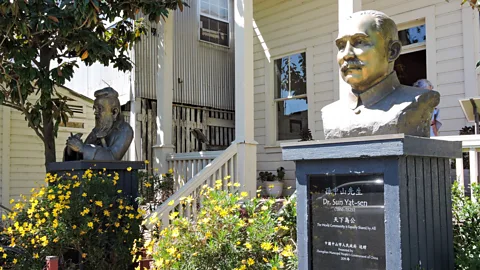 Pam & Gary Baker
Pam & Gary Baker“People realise Locke’s historical significance,” said Stuart Walthall, the Locke Foundation’s chair. “Locke is a legacy to those who endured alienation, poverty and discrimination, then went on to flourish. Locke provided a place of refuge in an unwelcoming world, and we should celebrate it.”
Rediscovering America is a BBC Travel series that tells the inspiring stories of forgotten, overlooked or misunderstood aspects of the US, flipping the script on familiar history, cultures and communities.
Related
Canada says too little, too late as Trump flip-flops on…
Nadine Yousif and Ali Abbas AhmadiBBC News, TorontoWatch: Canadian liquor store clears out US alcohol in response to tariffsNot long after the US imposed their
Vietnam, Thailand, and Philippines Among Top Asian Destinations Most-Searched by…
Home » Philippines Travel News » Vietnam, Thailand, and Philippines Among Top Asian Destinations Most-Searched by American Travelers, Driven by Surge in Viet
Trump tariffs tarnish ties: Americans anxious about travel to Canada…
Will Trump's tariffs on Canadian goods entering the U.S. affect tourism at home, tarnishing ties Canadians and Americans have shared for decades? It's a fair qu
Looming Trump travel ban strikes fear in Afghans who worked…
Expectations that President Donald Trump will soon bar Afghans and Pakistanis from entering the United States has set off panic among Afghans who were promised












